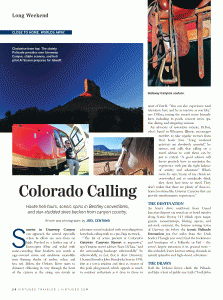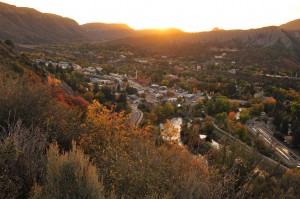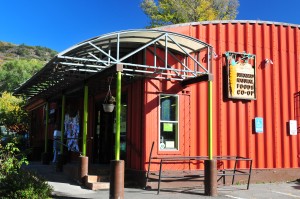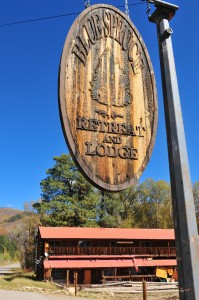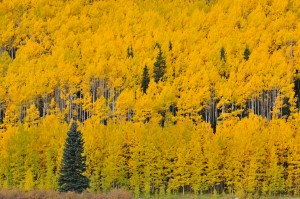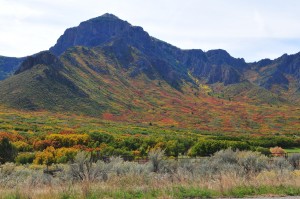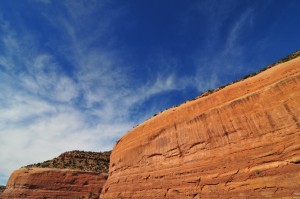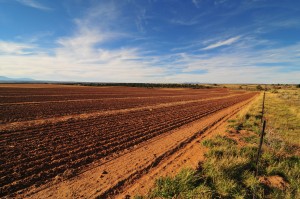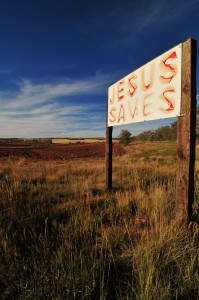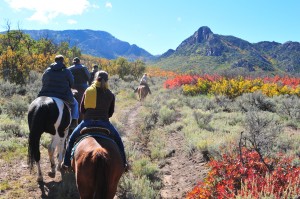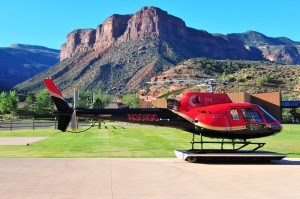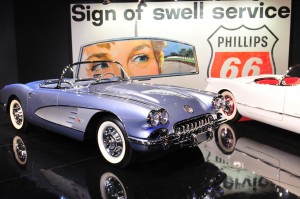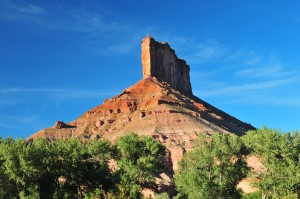It’s mid-October, which means that Colorado’s aspens must be fully in bloom. It also means that it’s been one full year since my last visit to the state – a visit that marked a much-needed return after a 16-year voluntary exile (see Time Travel: This One’s Personal) and that followed an invitation I received to stay at Gateway Canyons Resort, playground to Discovery Channel founder John Hendricks (see Gateway Canyons: A Curious Place). Though articles, like life, happen when they’re supposed to, I’m happy to have at long last published my story on the stay, written for the October issue of Virtuoso Traveler.
Tag Archives: Colorado
Time Travel (This One’s Personal)
So much can happen in the span of 16 years. Take my own life, for example: In the summer of 1997, I was only 23 years old, living in the small mountain town of Durango in southwestern Colorado. Largely without direction, recently graduated from college, and reeling from a break up, I woke up one morning, loaded my black lab-golden retriever mix, Mable, and the few possessions I had into my beat-up Subaru wagon, and just drove off. Away. I had no idea where I was going or where my life might lead.
Sixteen years and some months later, an assignment in Gateway (200 miles northwest of Durango) afforded me an opportunity to return, seeking long overdue perspective on my past and present vis-à-vis this town. Thomas Wolfe famously wrote that “You can’t go home again,” but I lean toward Bob Dylan’s take on the subject in his song, “Mississippi”: “You can always come back, but you can’t come back all the way.” Paul Theroux, though, perhaps said it best. Regarding those places we revisit, Theroux writes in Dark Star Safari, “You go away for a long time and return a different person – you never come all the way back.”
So true. Today as I tour Durango, so much has changed. The natural food co-op where I worked for a spell seems tired somehow, so much less vital than I recall. The ranch where I baled hay has grown considerably, its roadside placard now trumpeting the grass-fed, “locavore,” farm-to-fork phenomenon that was so quietly in style here even before the national trend. The house where I once lived, that sheltered so many young people coming and going, momentarily marooned between college and the next stages of their lives, is still surrounded by towering pines and scrub jays, but is now a family’s home by the looks of its basketball hoop and kids’ bikes laid across the lawn. The nearby saloon where my housemates and I passed winter nights is now abandoned and in decay, so reminiscent of the burned down bar in Richard Hugo’s “Death of the Kapowsin Tavern,” a poem I remember reading regularly back then.
Still, for me of course, what’s changed most significantly is myself. Like Hugo, “I can’t ridge” any of the past or its remains “back again from char” – which is a good thing. Walking streets I once walked, contemplating scenes previously so meaningful to me, and viewing Durango at dusk from its highest vantage point, it occurs to me again how life itself is synonymous with change, and just how many great things have graced my own life (friends, family, career, and home) since I was last here.
This time as I leave Durango, headed north on I-550 along severely steep mountain passes toward Silverton, Ouray, and ultimately, Grand Junction and my return flight to Seattle, there’s no need to look back. Lava-bright aspens light the mountainsides along roads with no guardrails and drop-offs so sudden that the only option is to look ahead, and, just for a moment as I pause for a roadside photo, at my phone for a perfectly timed message from my wife: “Drive safely,” she writes, “I can’t wait for you to be home.”
On the Road Again: Gateway to Durango, Colorado
My god it feels good to be streaming solo across the American Southwest again (it has been years), surrounded only by space and time. Physicists have yet to explain where either phenomenon comes from, a mystery which is of course understandable to those of us with families and fulltime jobs. But today I was able to find both (along with a healthy dose of silence) while traveling the vast and vacant roads of Western Colorado.
Today there was no music, no computer monitors, no meetings, no text messages to distract my thoughts as the scenery passed from mountains clad in autumnal oak brush to red-rock canyons covered in sage to recently tilled farmland boasting religious slogans of the purported saved.
Such landscapes (and especially the exquisite late afternoon sunlight near Cortez) called for breaking out my wide-angle lens (Tokina 11-16mm f/2.8), and, something I fear I’m able to do even less often these days: stopping, momentarily stepping away from things, and seeing.
Gateway Canyons: A Curious Place
There’s very little to the town of Gateway, Colorado: a diner (shut down, it seems, for some time), a post office (is it open?), a general store (still under construction). Blink on the drive through – about an hour from Grand Junction along the Unaweep-Tabeguache Scenic and Historic Byway – and and you’re sure to miss it. All the better, I say. Retired, reticent settings such as this so often store the best secrets, and in the case of Gateway, can quickly lead to revelation.
Just a few paces past “town” lies Gateway Canyons Resort, the brainchild of Discovery Channel founder John Hendricks. Over the past weekend I’ve had the opportunity to explore the resort and sample some of its draws, including soaring over 300-million-year-old red-rock formations in a helicopter, driving a convertible Bentley down quiet canyon roads, and riding horseback through valleys ablaze in brush oak and scented with sage.
It’s an eclectic and, truth be told, privileged playground for sure. And although a few of the activities feel as extravagant and over-the-top as the Discovery Channel’s lineup (see “Amish Mafia” or “Moonshiners”), what strikes me most is the number, and quality, of people I’ve met here (staff and guests alike), who, thanks to Hendricks’ vision, have found a place to pursue their passions. Take, for instance, the restoration specialist who maintains Hendricks’ impressive collection of vehicles at the on-site auto museum, the retired marine who leads guests on heli-tours (including a couple on their 64th anniversary over a mining camp they inhabited during the first years of their marriage), the horse whisperer who’s able to match even the most trepid rider with the right steed, and the brothers who I watched sail their small aircraft (again and again) past the Palisade (see bottom photo) before flying off to their next adventure.
There’s certainly no chance of being bored here (did I mention that guests can also learn to drive pro-Baja trucks on the resort’s off-road racetrack?). But what I’ve most appreciated about this place after, and even despite, all its activities, is the seclusion it has provided simply to sit, slow down, and watch the Palisade behind my casita soak up the setting sun and then slowly assimilate into the starry night. It’s during these shows that I most understand why Hendricks selected this spot as “the place” for his playground, and why his general manager so readily confided to me (twice, no less) that he never wanted to leave.

